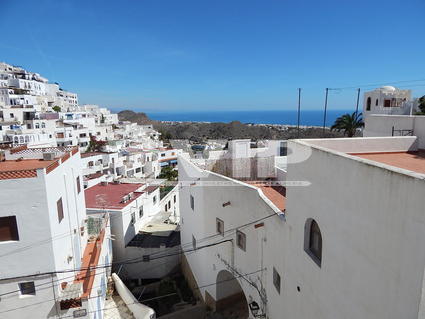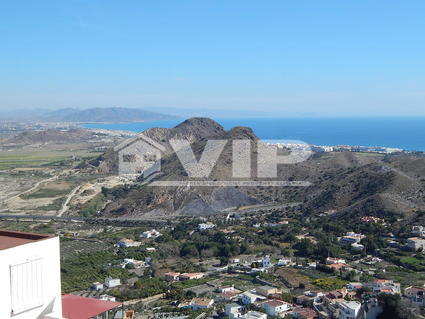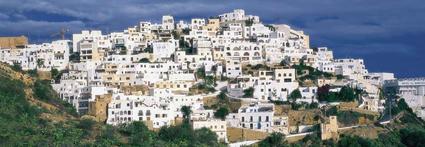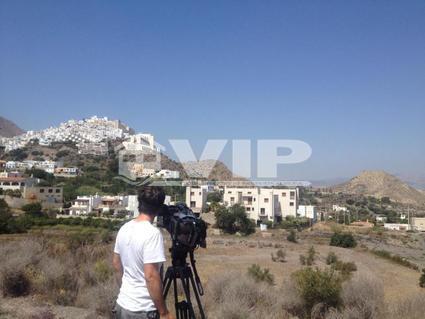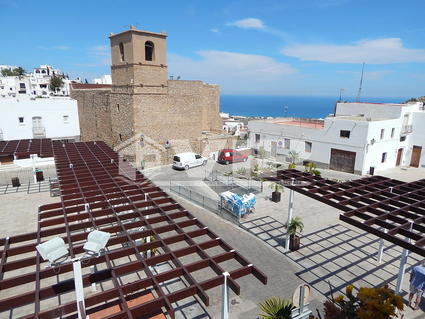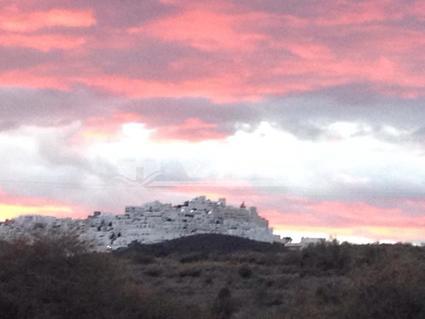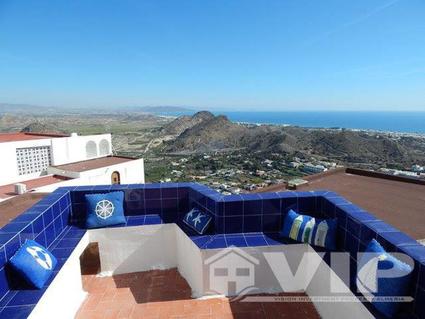Mojacar Village, Mojacar Playa, Almería
Mojacar Village - Mojacar has a long, multi-faceted history which stretches over 4000 years. Populated by Phoenicians, Carthaginians, Romans, Greeks, and Moors, it still remains an intersection of many cultures. It was under Moorish rule that Mojacar really began to flourish. The castle was built and the town walls were expanded and fortified. Even so, it remained a Muslim town on the Christian frontier and because of this, Mojacar suffered many brutal incursions.
In 1488, King Ferdinand and Queen Isabel came to the area to demand the submission of its local leaders. All complied except for the mayor of Mojacar. When later questioned about his absence at a meeting held near the town’s Fuente Mora (Moorish Fountain), the mayor reportedly stated that although he was a Muslim, generations of his people were Spanish by birth and that they deserved to be treated more “like brothers, not enemies…” Evidently, Ferdinand and Isabel were sufficiently impressed with the reply to accept the mayor’s pledge of loyalty and the town continued to flourish for the next four centuries. By the middle of the 18th century, its population had reached over 10,000 people.
Mojacar’s fortunes, however, began to change around the middle of the 19 th century when its population began to decline. The reasons were numerous. The region (technically Europe’s only desert) began to suffer severely from droughts and many residents began to leave. Some went northward to seek employment in the factories of industrialising Catalunya while others immigrated to distant places like the Americas. In fact, local legend claim that the cartoonist Walt Disney was born in the area and immigrated to the United States when he was a child.
This depopulation of Mojacar continued until the 1960s when it reached critical proportions with only 1000 residents living in the area. Local leaders then decided to give away land to anyone who promised to build upon it. This offer proved to be the spark which rekindled Mojacar’s economy. New residents began to appear and the town soon became a thriving artists’ colony. Word of the region’s natural beauty began to spread, tourism brought foreign money to the area, and the beach area became a favourite vacation retreat for travellers. Mojacar still has one of the highest expatriate populations in all of Spain.
This was also the time that the Indalo became the symbol of Mojacar. Originally a prehistoric cave drawing found near Vélez Blanco, it represents a man holding a rainbow or snake over his head. It is said to be a lucky totem and can be found in the front of homes and businesses throughout the province.
The town, however, still remains remarkably true to its Moorish past. Mojacar is a place that begs to be explored by foot.
Points of interest:
Statue of Mojaquera: Located in the church square. It is made of white marble and dressed in costume. Arab scarf covers her mouth, posed in a traditional the old way and carries the pitcher that was used to bring water from the source to the village and supply the home and family.
The church : The parish church of Santa Maria was built around 1560 and probably on the site of a former mosque. This building dates back to the 14th century and was originally a fortress. It became a church years later and still remains the religious centre of Mojacar life.
Plaza del Parterre : It is arcaded next to the walls of the church. Handmade by the artist Itziar Ortuzar.
Mirador Plaza: This is the nerve center of the town. From this viewing point we can see, the mountains of Cabrera, Bedar and Almagrera. Spot all neighboring villages from the mountains to the sea: Turre, Bedar, Los Gallardos, Vera, Garrucha and on clear days Águilas which is first town in the province of Murcia.
Plaza del Ayuntamiento - Town Hall Square: In the center we find an ancient tree surrounded by mosaics of the Indalo symbol.
Puerta de la Ciudad - City Gate: This was the traditional entrance to Mojacar which dates back to Moorish times. You can still see the coat of arms of Mojacar / the primitive shield of the municipality which was engraved above the arch sometime in the 15th century. It was the old path to the village.
Arrabal: Located outside the walls of the old Mojacar. The Jewish colony of Mojacar were based here, noticable differences include the doors of the buildings. Doors are low and wide with lobed arches.
Casa del Torreón - The Old Customs House: Just inside the old city gate is the 18 th century Casa del Torreón which served as the customs house for Mojacar. It was where visitors were taxed for the privilege of entering Mojacar.
Mirador del Castillo: This Mirador has a full sea impression with an altitude of 175m above the sea.
La Fuente- The Fountain: The ancient marble which was made of stone masonry. From its origins it was used by its inhabitants for drinking, washing and watering your plants. Regarded as an important piece of the history of Mojacar is reflected in the tombstone inscription.
Statue of the Mojaquera: Located in the Plaza Rey Alabez (next to the parking and close to the elevator). It is a bronze sculpture symbolizing the change of footwear that made theold women at the entrance and exit of the village.
COMMUNITY DEVELOPMENTS IN THIS ZONE:
MOJACAR PUEBLO
- Edificio La Fuente - C/La Fuente 23
- Fuente I - Calle Huerta de la Cañada num. 1 – 21
- Fuente II - Camino de los Raspejos
- Zaida Aptos - Av de Encamp
- Victoria Building - Calle Glorieta 6
- Multicentro Mojacar Puebo - C/ Alcalde Jacinto // Plaza Nueva
- Edificio Arco Plaza – Plaza Nueva // Calle Enmedio
- El Huerto – Calle Puertecico // Calle Fuensanta
- La Fuensanta – Camino la Fuensanta 2
- Cortijos Huertas de Abajo – Huertas de abajo // Huerta de las parras
- Cortijos Cuesta Almeces – C/ Cuesta almeces


